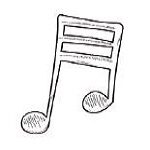STRATEGY FOCUS
Artifact Review
PURPOSE
An Artifact Review challenges and motivates students to analyze significant artifacts (text, pictures, quotes, primary sources, maps, charts, media, etc.) through inquiry by observing, questioning, researching, and drawing conclusions. Use this strategy when presenting an unfamiliar artifact individually, in small groups, or as a whole class.

PROCESS
- Gather an artifact (or a variety of artifacts), relevant and significant to the current unit of study. Artifacts may include text, pictures, quotes, primary sources, maps, charts, media, etc.
- Introduce the artifact(s) and prompt students to identify as many objective facts as they can, such as author, creator, date, place of origin, materials, size, shape, color, etc.
- Invite students to interpret the artifact(s) by asking them to infer the purpose, use, or importance of the artifact(s), supporting their inferences with evidence whenever possible.
- Ask students to reflect upon the investigation as a whole to draw conclusions about the artifacts, and how and why this particular artifact (or set of artifacts) is significant to the current unit of study.
PROBING QUESTIONS
CONSIDERATIONS
- What are some wonders you have about the artifact(s) you reviewed?
- How did reviewing the artifacts help you better understand the subject matter?
- What new learnings do you have as a result of the Artifact Review?
- This strategy works well as a way to activate prior knowledge or pique the interest of learners at the beginning of a lesson or unit of study.
- Pair this strategy with Double Entry Organizer, Alphablocks, or See-Think-Wonder so students can track their reactions, thoughts, connections, and wonders.
- Consider organizing several artifacts into folders or containers for students to share or pass around the classroom. Digital folders might be a viable option for your learners as well.
- Consider allowing students to illustrate and label the artifact(s) as a way to carefully analyze all the parts and pieces.
CONTENT APPLICATIONS
 ENGLISH
ENGLISH
LANGUAGE ARTS
Before reading Omnivore’s Dilemma, students explore a variety of texts, images, and ideas related to food and eating that they’ll be engaging with during the unit.
![]()
WORLD LANGAUGES
Before reading Omnivore’s Dilemma, students explore a variety of texts, images, and ideas related to food and eating that they’ll be engaging with during the unit.
![]()
SOCIAL STUDIES
Present multiple sources with supporting question(s) as guidance to determine if the source is relevant and useful to answer the question(s).
 VISUAL & PERFORMING ARTS
VISUAL & PERFORMING ARTS
Students explore and analyze a variety of artistic mediums from a time period (music, dance, drama, painting, sculpture).
![]()
MATHEMATICS
Provide student work samples (names removed) that illustrate different ways a particular problem was solved. Ask students to analyze the different problem-solving methods and be able to explain how each one works and why.
![]()
HEALTH & PHYSICAL EDUCATION
Students review various boxes of grocery store food items, analyzing nutrition labels, photos, illustrations, and ingredients lists in order to identify items with a healthy balance of macronutrients.
![]()
CAREER & TECHNICAL EDUCATION
When studying advertising in a business class, provide students with a vareity of advertising artifacts (magazine ads, digital ads, music, commercials, etc.) to analyze and explore.
 SCIENCE
SCIENCE
When looking at data for the first time, students point out things they notice or see. Then they interpret what they’ve noticed by explaining what it means and how it helps them support an idea or explain a phenomenon.
Sources
Fuhler, C. J., Farris, P. J., & Nelson, P. A. (2011, November 9). Building literacy skills across the curriculum: Forging Connections With the Past Through Artifacts. International Literacy Association. Retrieved March 23, 2022, from https://ila.onlinelibrary.wiley.com/doi/abs/10.1598/RT.59.7.4
inquirED. (2020, June 14). Artifact study: Inquiry lesson plan strategy. inquirED. Retrieved March 23, 2022, from https://www.inquired.org/post/artifact-study
